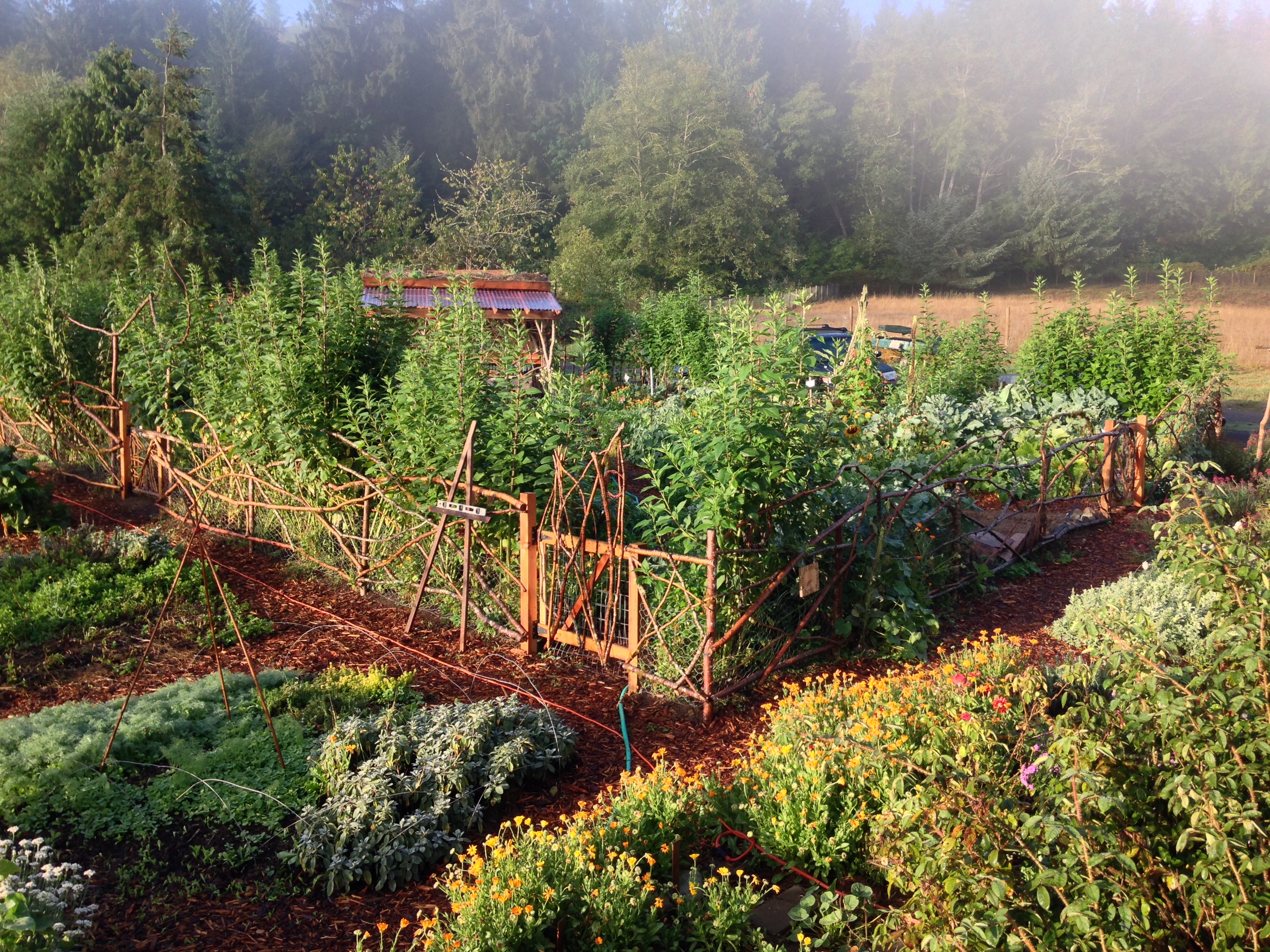

Articles
What Is Permaculture Garden
Modified: August 28, 2024
Discover the principles of permaculture gardening and learn how to create a sustainable and eco-friendly garden. Explore innovative techniques and tips for successful gardening.
(Many of the links in this article redirect to a specific reviewed product. Your purchase of these products through affiliate links helps to generate commission for Storables.com, at no extra cost. Learn more)
Introduction
Welcome to the world of permaculture gardening! In this article, we will explore what permaculture is all about and how it can transform your garden into a sustainable and thriving space. Whether you are a seasoned gardener or just starting out, permaculture offers a holistic approach to gardening that goes beyond simply growing plants. It is a philosophy and design system that aims to create harmonious and resilient ecosystems that work with nature rather than against it.
Permaculture gardening encompasses a range of techniques and principles that are rooted in sustainable and regenerative practices. By implementing these principles, you can create a garden that not only provides food and beauty but also reduces waste, conserves resources, and supports biodiversity. Let’s dive deeper into the world of permaculture and uncover how you can apply its principles in your own garden.
Before we delve into the specifics of permaculture gardening, let’s first understand the core principles that guide this approach.
Key Takeaways:
- Embrace permaculture gardening to create sustainable, regenerative ecosystems that maximize food production, conserve resources, and promote biodiversity, contributing to a more resilient and harmonious world.
- By incorporating permaculture principles, transform outdoor spaces into vibrant, ecologically harmonious environments, fostering a deeper connection with nature and contributing to a sustainable future.
Read more: What Gardeners Need
What is Permaculture?
Permaculture, a term coined by Bill Mollison and David Holmgren in the 1970s, stands for “permanent agriculture” or “permanent culture.” It is founded on the idea of designing human systems that imitate the patterns and principles of natural ecosystems. Permaculture goes beyond conventional gardening techniques by utilizing a holistic and integrated approach to create self-sustaining and regenerative systems.
This sustainable design philosophy is based on three core ethics: care for the Earth, care for people, and fair share. By incorporating these ethics into our gardening practices, we can create a harmonious and balanced relationship with the environment and nurture thriving communities.
Permaculture techniques take into account the natural features of the landscape, climate, and the needs of the gardeners to create a resilient and productive garden ecosystem. It emphasizes the importance of observing and understanding natural patterns and processes to guide our design and decision-making. Rather than relying on chemical inputs, permaculture focuses on working with nature and utilizing renewable resources to create a self-sustaining and regenerative garden system.
A key aspect of permaculture is the concept of “stacking functions” – using each element in the garden to serve multiple purposes. This ensures maximum efficiency and productivity, as well as minimizing waste. For example, a fruit tree not only provides a harvest of delicious fruits but also offers shade, provides habitat for beneficial insects, and helps build soil fertility through its fallen leaves.
Permaculture encourages the use of organic and ecological gardening practices such as composting, mulching, companion planting, and natural pest control methods. By building healthy and nutrient-rich soil, conserving water, and promoting biodiversity, permaculture gardens create a thriving ecosystem that benefits both plants and animals.
Permaculture is not limited to the boundaries of a garden but extends to all aspects of life, including energy conservation, sustainable housing, community development, and social systems. It is a holistic approach that aims to create a regenerative and abundant world for ourselves and future generations.
Now that we have a basic understanding of permaculture, let’s explore the principles that form the foundation of this gardening philosophy.
Principles of Permaculture
Permaculture is guided by a set of principles that help shape the design and implementation of a sustainable and productive garden. These principles, developed by Bill Mollison, provide a framework for creating regenerative ecosystems. Let’s explore some of the key principles of permaculture:
- Observe and Interact: Before taking any action, observe and understand the natural patterns and processes of your garden. Take the time to learn about the soil, climate, and ecosystem dynamics. This will help you make informed decisions and design a garden that aligns with the natural environment.
- Catch and Store Energy: The sun is a powerful source of energy. Capture and utilize this energy through techniques like solar panels, passive solar design, and water harvesting systems. By harvesting and storing energy, we can reduce reliance on non-renewable resources and create a more sustainable garden.
- Obtain a Yield: Permaculture is not only about creating a beautiful garden but also about producing and harvesting a diverse range of yields. This can include fruits, vegetables, herbs, seeds, and timber. Maximizing productivity ensures that the garden meets the needs of the gardener while still supporting the overall ecosystem.
- Apply Self-Regulation and Accept Feedback: Just like natural ecosystems, permaculture gardens require a level of self-regulation and adaptation. Pay attention to the feedback from your garden and learn from your successes and failures. Adjust your design and practices accordingly to create a more resilient and balanced system.
- Use and Value Renewable Resources and Services: Permaculture emphasizes the importance of utilizing renewable resources and services provided by the natural environment. This includes harnessing the power of the sun, wind, and water, as well as the services provided by animals, insects, and microorganisms. By working in harmony with these resources and services, we can create sustainable and regenerative garden systems.
- Produce No Waste: In nature, there is no such thing as waste. Everything serves a purpose and becomes a resource for another process. Embrace this concept in your garden by practicing recycling, composting, and reusing materials. Minimize waste and maximize resource efficiency to create a more sustainable garden.
- Design from Patterns to Details: Permaculture gardens are designed in a way that mimics the patterns and relationships found in natural ecosystems. Start with understanding the larger patterns and then focus on the details. This helps create a cohesive and harmonious garden design that integrates seamlessly with the surrounding environment.
- Integrate Rather Than Separate: In permaculture, different elements in the garden are interconnected and mutually beneficial. This principle encourages the integration of various plants, animals, and structures to create a balanced and functional ecosystem. By embracing diversity and fostering synergistic relationships, we can enhance the resilience and productivity of our gardens.
- Use Small and Slow Solutions: Permaculture values the idea of small and slow solutions rather than large-scale interventions. Start small and observe how your garden responds to changes. Learn from your experiences and gradually implement solutions that are appropriate and sustainable for your specific context.
- Value the Edge: The edges between different elements in the garden, such as between land and water or between different plant species, often harbor unique ecological niches. These edge zones are highly productive and support greater biodiversity. Permaculture encourages the design and cultivation of these edge areas to maximize productivity and enhance habitat diversity.
By embracing these principles, you can create a permaculture garden that is not only productive but also sustainable, resilient, and in harmony with nature. Now that we have explored the principles of permaculture, let’s move on to understanding the key components of a permaculture garden.
Components of a Permaculture Garden
A permaculture garden is a carefully designed and integrated system that incorporates various components to create a sustainable and productive ecosystem. These components work together to maximize productivity, conserve resources, and promote biodiversity. Let’s explore some key components of a permaculture garden:
- Food Forests: Food forests, also known as forest gardens, are a central component of permaculture gardens. These are designed to mimic the structure and function of a natural forest ecosystem, with multiple layers of plants that provide a diverse range of yields. In a food forest, you can find tall canopy trees, understory shrubs, herbaceous plants, groundcovers, and climbing vines, all working together to create a highly productive and self-sustaining system.
- Companion Planting: Companion planting is the practice of growing different plants together for mutual benefit. Some plants naturally enhance the growth and health of each other by repelling pests, attracting beneficial insects, or providing shade and support. By strategically combining compatible plants, you can increase yields, reduce pest pressure, and improve overall garden health.
- Keyhole Gardens: Keyhole gardens are circular or horseshoe-shaped raised beds with a small opening on one side, resembling a keyhole. This design allows easy access to the entire bed from a central point, minimizing the need for pathways and maximizing space utilization. Keyhole gardens are often built with a composting system at the center, utilizing kitchen scraps and other organic materials to provide nutrients to the surrounding plants.
- Water Harvesting Systems: Water is a precious resource that should be conserved in a permaculture garden. Various water-harvesting techniques such as rainwater collection, swales, and ponds are used to capture and use rainfall efficiently. These systems help replenish groundwater, reduce erosion, and provide a reliable water source for plants, especially during dry periods.
- Animal Integration: Animals have an important role in permaculture gardens. They contribute to soil fertility through manure, control pests and weeds, and provide other valuable products such as eggs, milk, or honey. Integrating chickens, ducks, bees, or even larger animals like goats or pigs into the garden system can create a symbiotic relationship, benefiting both plants and animals.
- Polycultures: Polyculture involves growing multiple plant species together in the same area, as opposed to monoculture, where only one crop is cultivated. Polycultures help increase biodiversity, enhance soil health, and reduce the risk of pest and disease outbreaks. Additionally, different plants have different nutrient requirements, so polycultures can make more efficient use of available resources.
- Perennial Plants: Perennial plants are long-lived plants that come back year after year, saving the effort and resources required for replanting annually. Including a diverse range of perennial plants in your garden not only provides a continuous harvest but also improves soil health, prevents erosion, and supports beneficial insects and pollinators.
- Vertical Gardening: Vertical gardening utilizes vertical space to maximize productivity in limited areas. By growing plants vertically, either on trellises, walls, or structures, you can increase the yield per square foot and create a lush and vibrant garden. Vertical gardening is particularly suitable for vining crops, such as cucumbers, beans, and melons.
- Herb Spirals: Herb spirals are spiral-shaped raised beds that are built with different soil layers and microclimates. The taller and more sun-loving herbs are planted on the top, while moisture-loving herbs and plants that prefer shade are located in the lower sections. Herb spirals provide an efficient and space-saving way to grow a variety of herbs in a small area.
- Composting and Soil Improvement: Healthy soil is the foundation of a successful permaculture garden. Composting kitchen scraps, garden waste, and other organic materials generates nutrient-rich compost that improves soil structure, fertility, and moisture retention. Additionally, techniques like sheet mulching, cover cropping, and vermiculture (using worms) can further enhance soil health and biodiversity.
By incorporating these components into your permaculture garden, you can create a diverse, productive, and sustainable ecosystem that works in harmony with nature. Now that we understand the components of a permaculture garden, let’s explore the process of designing one.
When designing a permaculture garden, consider incorporating a variety of plants that support each other and the local ecosystem. This can include companion planting, using native species, and creating diverse habitats for beneficial insects and wildlife.
Designing a Permaculture Garden
Designing a permaculture garden involves careful planning and consideration of various factors such as site characteristics, climate, soil conditions, and the needs and goals of the gardener. A well-designed permaculture garden aims to create a harmonious and productive ecosystem that works with nature to achieve sustainability and abundance. Here are some key steps to guide you through the process of designing your own permaculture garden:
- Site Assessment: Begin by assessing your garden site and understanding its unique characteristics. Observe factors such as sunlight patterns, water availability, wind direction, and soil conditions. This information will help you make informed decisions about placement and selection of plants and structures in your garden.
- Define Goals and Priorities: Clarify your goals and priorities for your garden. Do you want to focus on growing food, creating a wildlife habitat, conserving water, or all of the above? Understanding your goals will guide your design choices and help inform the layout and components of your permaculture garden.
- Zoning: Zoning is an important concept in permaculture design, which involves grouping elements of the garden based on their frequency of use and their needs. Designate zones based on the intensity of human interaction and the needs of the elements. For example, Zone 1 represents the area closest to the home, which is typically reserved for high-value and frequently used elements like herbs and vegetables. Zones further away from the home are dedicated to less frequently accessed elements, such as fruit trees, livestock, or wildlife habitats.
- Utilize Permaculture Principles: Apply the principles of permaculture to guide your design decisions. Consider how you can incorporate principles such as stacking functions, integrating elements, and utilizing renewable resources into your garden layout. The more closely you follow these principles, the more sustainable and efficient your garden will be.
- Plan for Diversity: Incorporate a wide variety of plants and companion species into your garden to promote biodiversity and increase resilience. Select plants that serve multiple functions, such as nitrogen-fixing plants, insect-attracting flowers, or groundcovers that suppress weeds. The more diverse your plantings, the more balanced and resistant your garden will be to pests and diseases.
- Water Management: Consider how you will manage water within your garden. Implement water-harvesting techniques such as rainwater collection, swales, or drip irrigation systems. Design the garden in a way that captures and utilizes rainfall efficiently, avoiding runoff and soil erosion.
- Maximize Use of Space: Make the most of the available space in your garden by using vertical gardening techniques, intercropping, and succession planting. This ensures efficient use of resources and maximizes yields in limited areas. Embrace the concept of “stacking” different elements to create productive and diverse planting combinations.
- Consider Energy Efficiency: Design your garden in a way that optimizes energy efficiency. Consider factors such as sun exposure, wind flow, and shading. Utilize the natural elements to your advantage, such as utilizing trees or structures to provide shade or act as windbreaks.
- Implementation and Maintenance Plan: Once your design is complete, develop a plan for implementing and maintaining your permaculture garden. Determine the required resources, schedule tasks, and allocate time for regular maintenance and observation. Implement gradual changes and adaptations over time to allow the garden to evolve and mature.
Remember that designing a permaculture garden is a dynamic and ongoing process. Regular observation, evaluation, and adaptation are crucial to its success. As you gain experience, you can fine-tune your design and implement new strategies to ensure the long-term sustainability and productivity of your permaculture garden.
Now that we have explored the process of designing a permaculture garden, let’s uncover the benefits of implementing this approach in your gardening practices.
Read more: What To Plant In The Garden
Benefits of a Permaculture Garden
Implementing permaculture principles in your garden offers a multitude of benefits that go beyond just growing plants. By creating a sustainable and regenerative ecosystem, a permaculture garden provides numerous advantages for both the environment and the gardener. Let’s explore some of the key benefits of having a permaculture garden:
- Sustainability: Permaculture gardens are designed to be sustainable, mimicking natural ecosystems and utilizing renewable resources. By working with nature rather than against it, permaculture gardens conserve water, reduce waste, and promote biodiversity.
- Increased Food Production: Permaculture gardens are highly productive. By maximizing space utilization, interplanting, and using companion planting techniques, you can grow a diverse range of fruits, vegetables, and herbs within a limited area. This allows you to harvest an abundance of fresh and nutritious food for yourself and your family.
- Improved Soil Health: Permaculture gardening focuses on improving soil fertility and structure. By implementing composting, mulching, and cover cropping techniques, you can enhance soil health, increase nutrient availability, and improve water retention. Healthy soil translates to healthy and productive plants.
- Conservation of Resources: Permaculture gardens emphasize resource conservation. Through techniques like water harvesting and efficient irrigation methods, you can reduce water usage and conserve this precious resource. The incorporation of renewable energy sources, such as solar panels, can also help reduce reliance on non-renewable energy.
- Enhanced Biodiversity: Permaculture gardens support a wide array of plant and animal species. By incorporating diverse plantings, providing habitat for beneficial insects and wildlife, and avoiding the use of harmful chemicals, permaculture gardens promote biodiversity and create a balanced ecosystem.
- Reduced Environmental Impact: Permaculture gardens prioritize ecological harmony and minimize the use of synthetic inputs. By avoiding synthetic pesticides, herbicides, and fertilizers, you help protect the environment by preventing pollution of waterways and soil, and minimizing harm to beneficial organisms.
- Increased Resilience: Permaculture gardens are designed to be resilient to changes in weather and climate. The incorporation of diverse plant species, water-harvesting techniques, and soil-improving practices helps the garden withstand droughts, floods, and other challenges.
- Health and Well-being: Gardening has numerous physical and mental health benefits, and permaculture gardens are no exception. Spending time in your permaculture garden allows you to connect with nature, engage in physical activity, reduce stress, and enjoy the rewards of harvesting your own fresh, nutritious produce.
- Community Building: Permaculture gardens have the potential to bring people together. They can serve as a gathering space for sharing knowledge, resources, and experiences. Community gardens and shared permaculture projects encourage collaboration and foster a sense of belonging and interconnectedness.
- Educational Opportunities: Permaculture gardens offer ample educational opportunities for people of all ages. By involving children and community members in the garden, you can teach them about sustainable gardening practices, ecological principles, and the importance of caring for the Earth.
By embracing permaculture principles in your garden, you can create a thriving and sustainable ecosystem that benefits both the environment and your well-being. Now, let’s explore some inspiring examples of permaculture gardens to showcase the potential of this approach.
Examples of Permaculture Gardens
Permaculture gardens can be found all around the world, showcasing the diversity and adaptability of this sustainable gardening approach. Here are a few examples of inspiring permaculture gardens that demonstrate the potential of creating thriving and regenerative ecosystems:
- Geoff Lawton’s Zaytuna Farm, Australia: Zaytuna Farm, established by permaculture expert Geoff Lawton, is a renowned permaculture education center located in New South Wales, Australia. The farm showcases various permaculture techniques, including swales and earthworks for water management, intensive food forest systems, animal integration, and sustainable soil regeneration practices.
- Finca Luna Nueva, Costa Rica: Finca Luna Nueva is an organic and biodynamic farm situated in the heart of the Costa Rican rainforest. The farm utilizes permaculture principles to grow a diverse range of tropical fruits, medicinal plants, and spices. It features agroforestry systems, innovative composting techniques, and natural building structures to create a sustainable and biodiverse ecosystem.
- Tanamá Cooperative, Puerto Rico: The Tanamá Cooperative is a community-led permaculture project located in Puerto Rico. After the devastation caused by Hurricane Maria, the cooperative transformed a barren landscape into a productive and resilient permaculture garden. They utilized water-harvesting techniques, agroecology practices, and integrated animal systems to create a self-sustaining and regenerative community food forest.
- Urban Permaculture Institute, United States: The Urban Permaculture Institute, based in San Francisco, California, is dedicated to promoting permaculture principles in urban settings. They have created inspiring examples of rooftop gardens, vertical gardening systems, and community gardens in urban neighborhoods. These projects showcase the potential of permaculture to transform unused spaces into productive and sustainable environments.
- Mandalay House and Gardens, New Zealand: The Mandalay House and Gardens in New Zealand exemplify permaculture principles in action. The property has been transformed into a productive food forest, featuring a wide variety of fruit and nut trees, perennial herbs, and vegetable gardens. It incorporates water-harvesting techniques, raised beds, and animal systems, showcasing the integration of elements and diversity of plantings.
- Sepp Holzer’s Krameterhof, Austria: Sepp Holzer’s Krameterhof is a permaculture farm located in the Austrian Alps. It demonstrates the potential of permaculture in high-altitude and challenging environments. The farm utilizes terraces, ponds, and water management systems to create microclimates and grow a wide range of crops. It showcases the importance of observing and adapting to the natural landscape for successful permaculture design.
These are just a few examples of the diverse and inspiring permaculture gardens found across the globe. Each garden demonstrates the potential of permaculture to create sustainable, productive, and resilient ecosystems. By observing and learning from these examples, you can apply permaculture principles in your own garden and contribute to a more sustainable and regenerative future.
Now that we have explored the benefits and examples of permaculture gardens, let’s conclude our journey into the world of permaculture gardening.
Conclusion
Permaculture gardening offers a holistic and sustainable approach to cultivating our outdoor spaces. By incorporating permaculture principles and techniques, we can create thriving, regenerative ecosystems that support both the environment and our well-being.
In this article, we explored the essence of permaculture gardening and its core principles. We learned that permaculture is more than just a gardening technique—it is a philosophy that encourages sustainable living and responsible stewardship of the Earth.
The components of a permaculture garden, such as food forests, companion planting, and water management systems, work together to create a productive and resilient ecosystem. Through careful design and implementation, we can maximize the use of space, conserve resources, and promote biodiversity.
Permaculture gardens offer a range of benefits, from increased food production and improved soil health to reduced environmental impact and enhanced community connection. By practicing permaculture, we contribute to the creation of a sustainable and regenerative world.
As demonstrated by inspiring examples of permaculture gardens around the world, this approach is adaptable to various climates, landscapes, and scales. Whether in urban settings or rural landscapes, permaculture offers an opportunity to transform our outdoor spaces into productive, vibrant, and ecologically harmonious environments.
Creating a permaculture garden requires careful observation, thoughtful planning, and ongoing management. It is an ever-evolving process that encourages us to learn from nature, adapt to our surroundings, and foster a deeper connection with the Earth.
So, whether you are a seasoned gardener or just starting out, consider embracing permaculture principles in your own garden. By working with nature, embracing diversity, and prioritizing sustainability, we can create gardens that not only provide us with nourishment and beauty, but also contribute to the greater well-being of our planet.
Let’s embark on this journey to create permaculture gardens and be part of the global movement towards a more sustainable future.
Frequently Asked Questions about What Is Permaculture Garden
Was this page helpful?
At Storables.com, we guarantee accurate and reliable information. Our content, validated by Expert Board Contributors, is crafted following stringent Editorial Policies. We're committed to providing you with well-researched, expert-backed insights for all your informational needs.
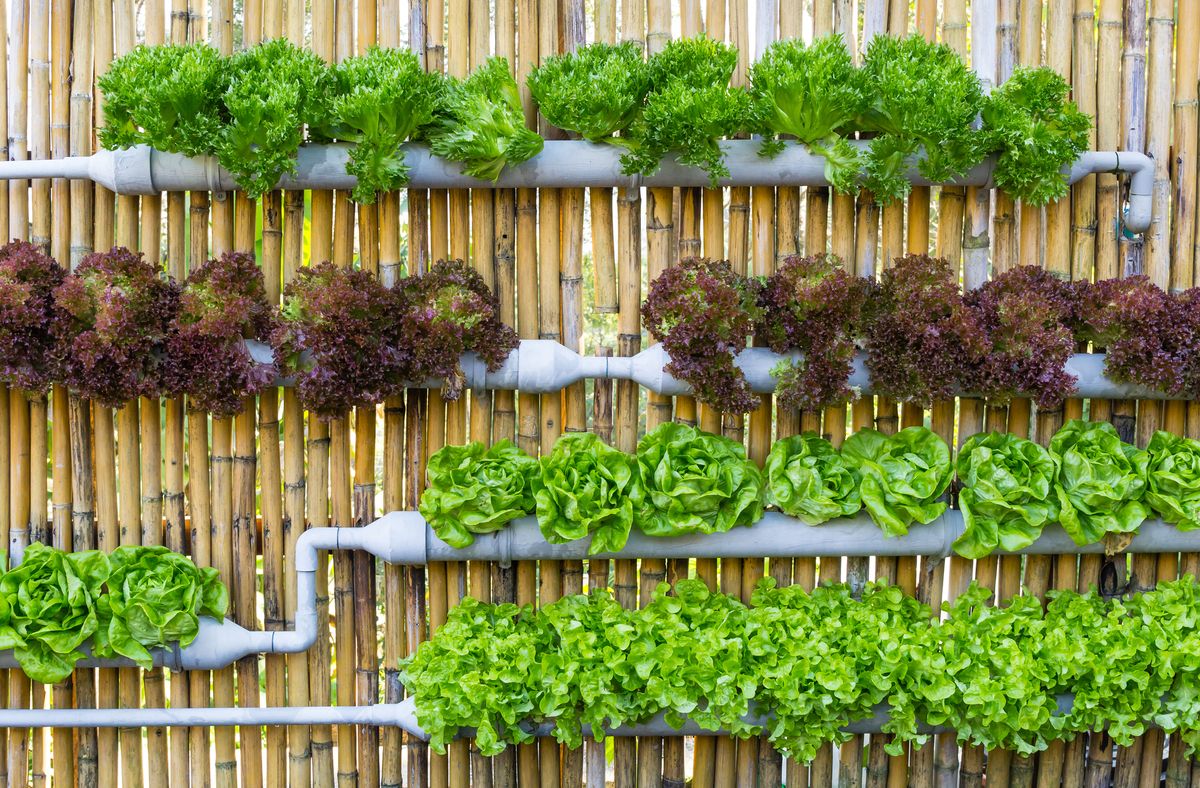
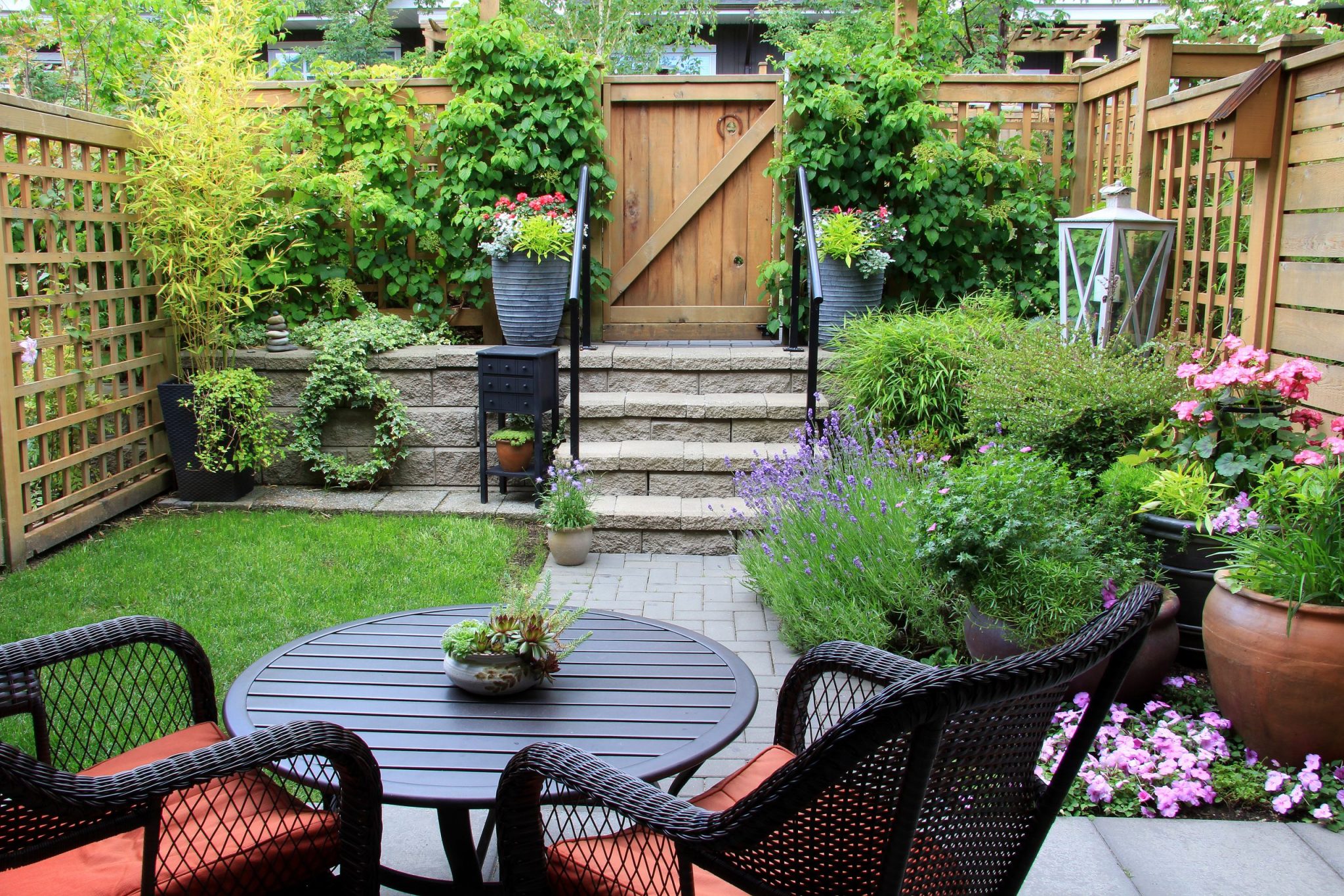

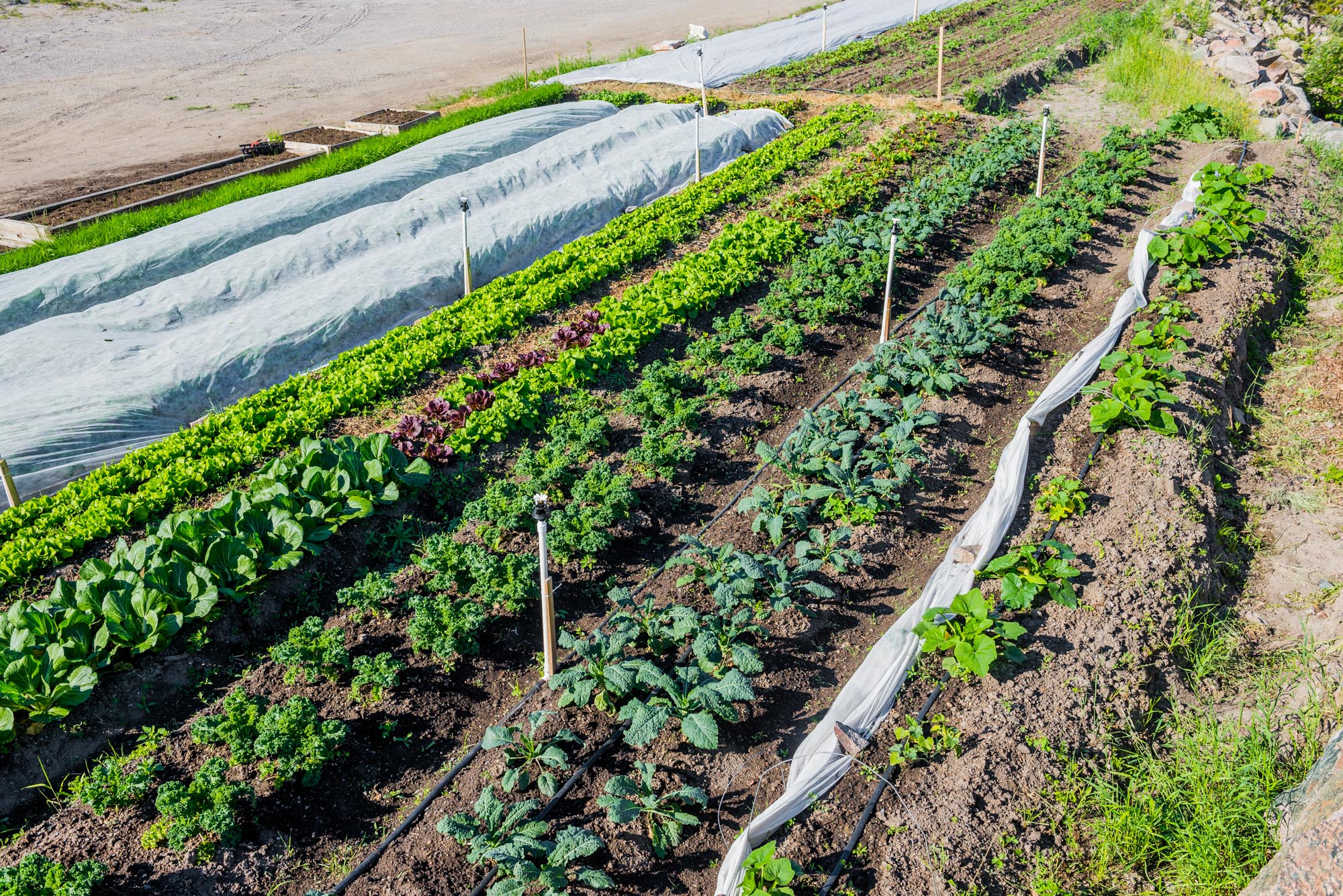
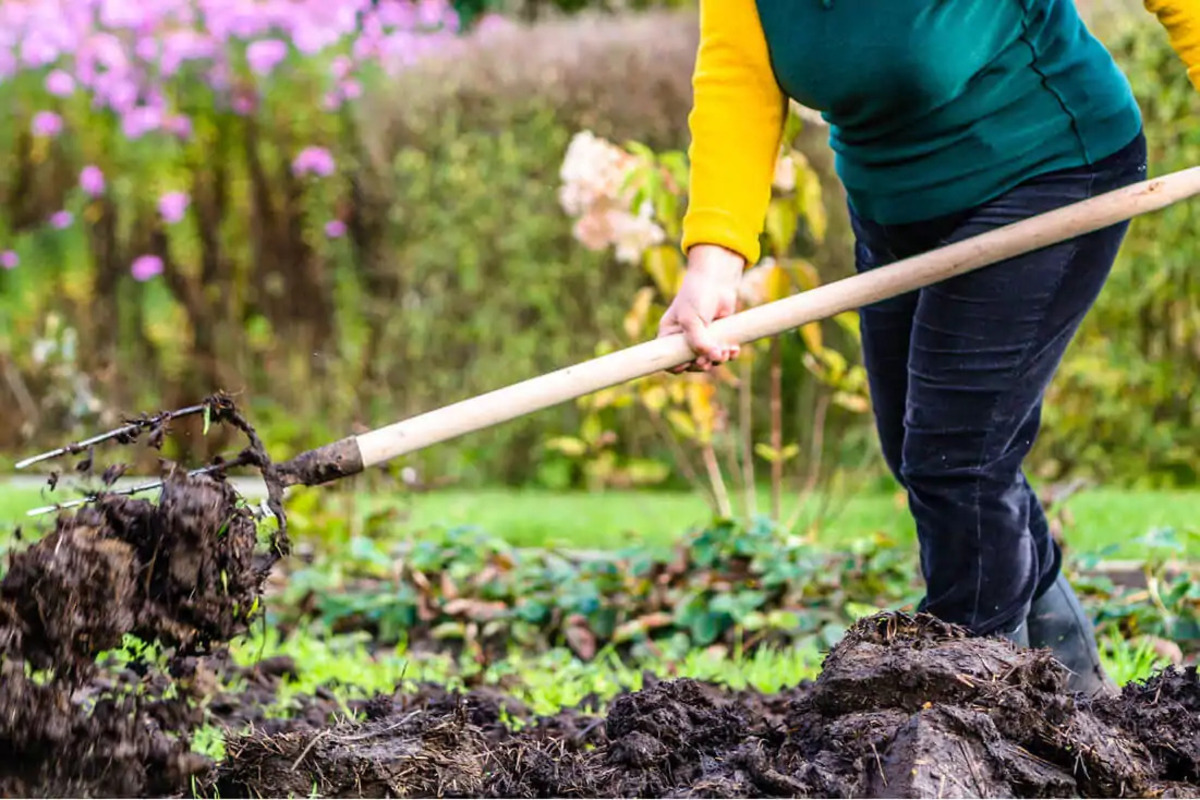

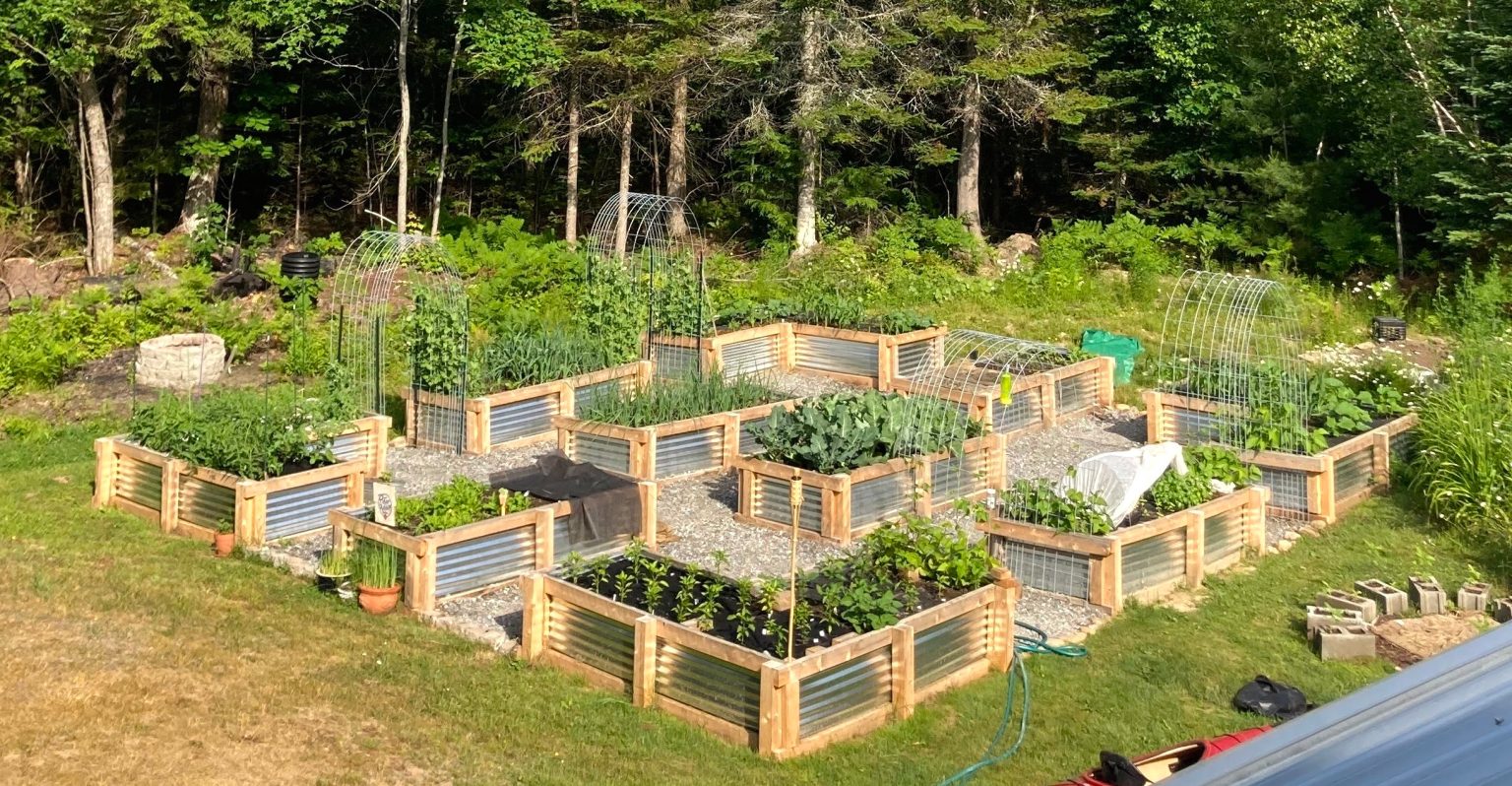

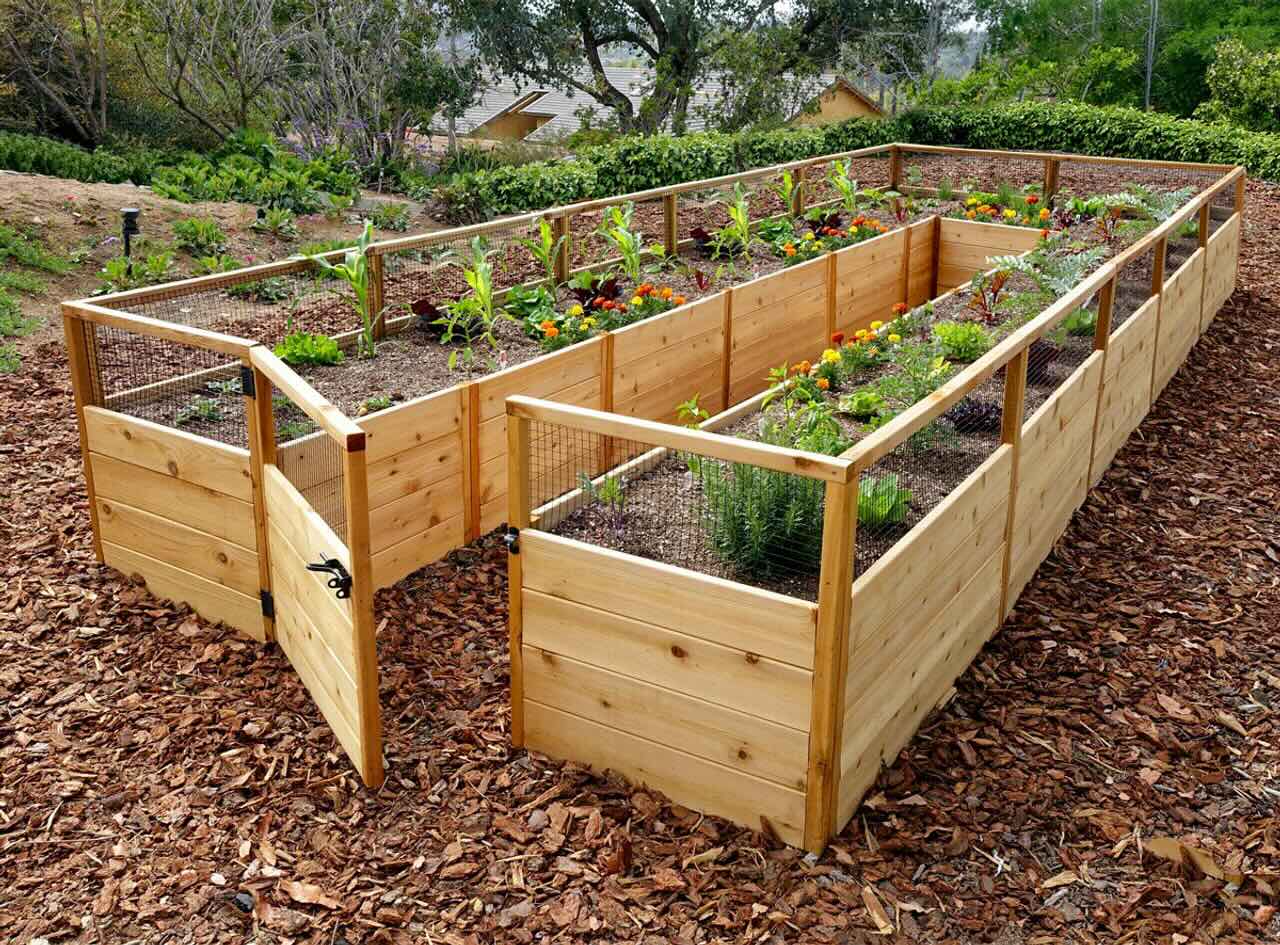

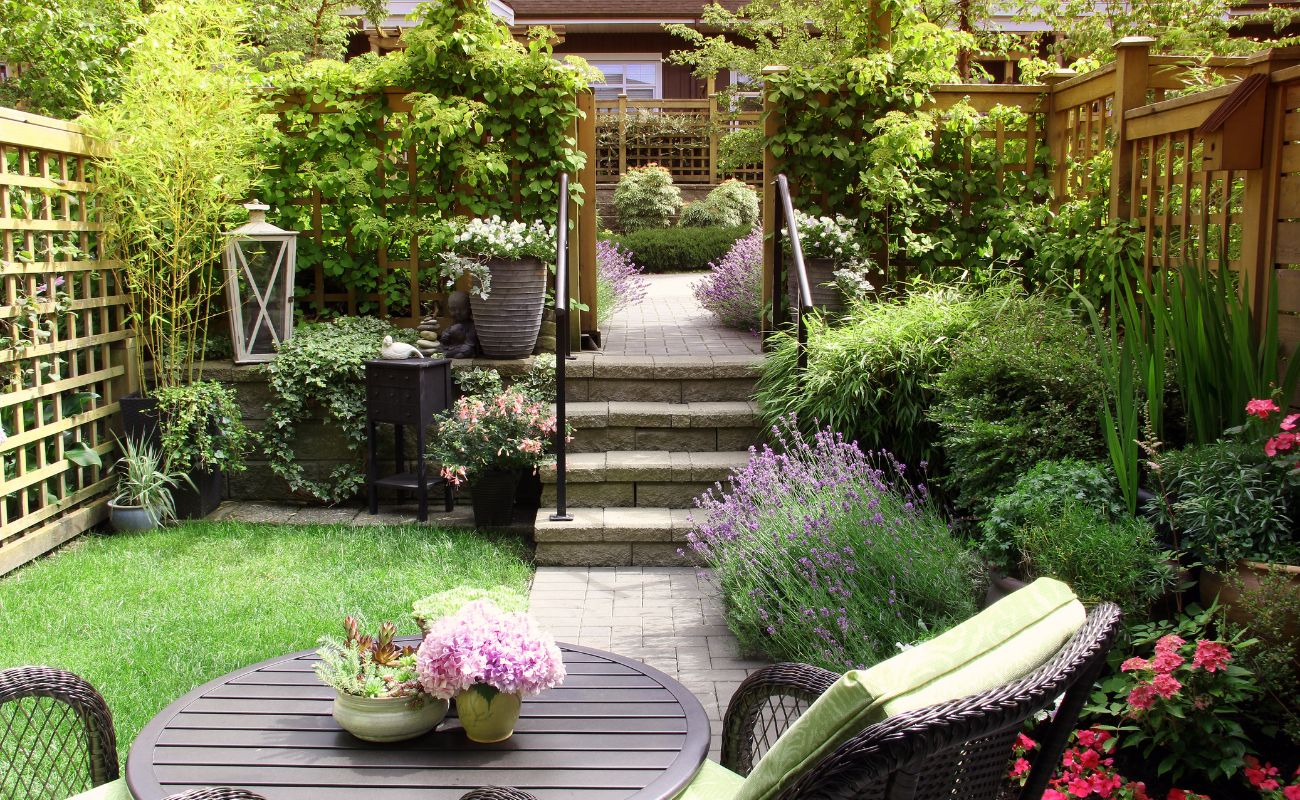


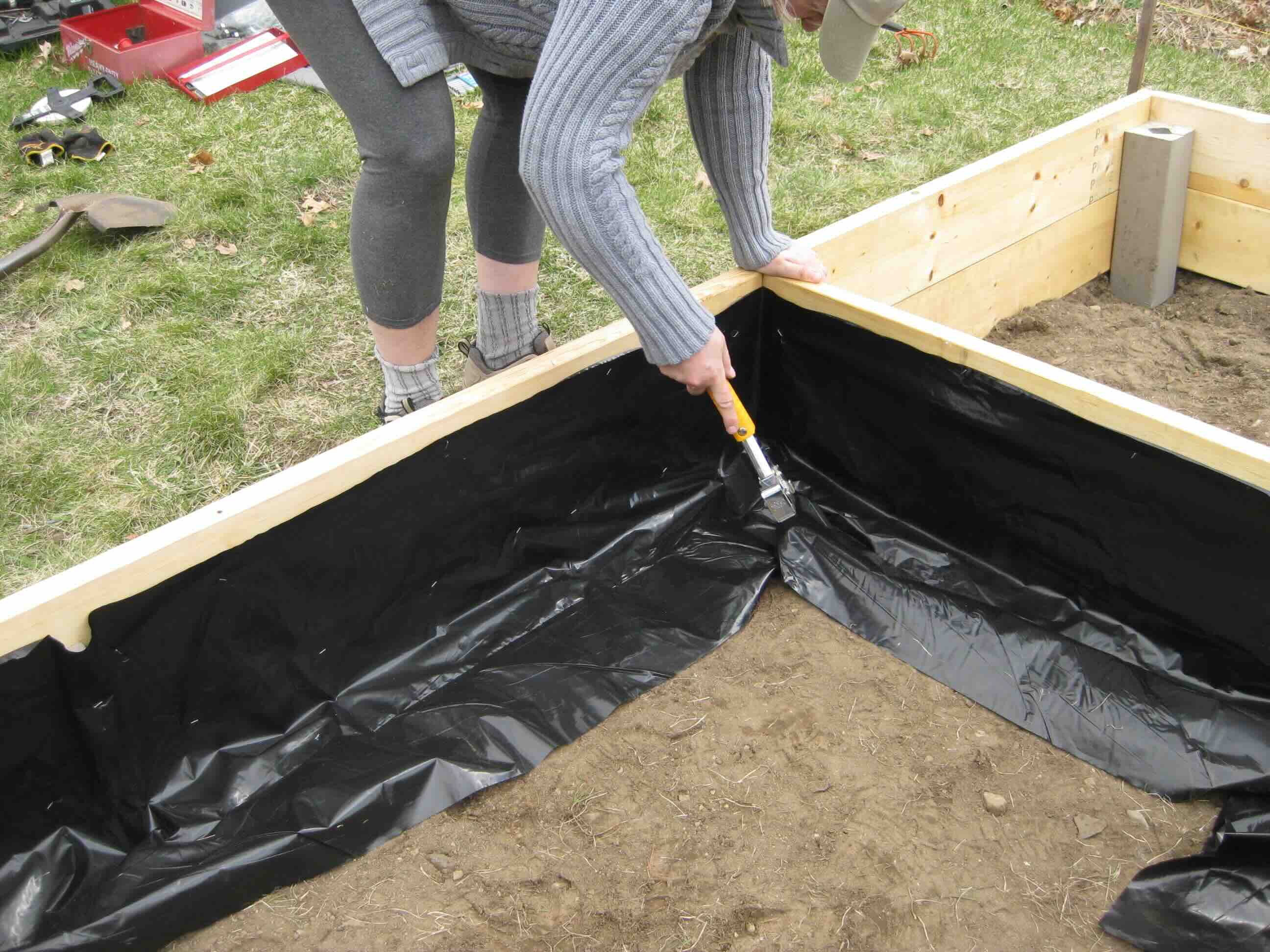

0 thoughts on “What Is Permaculture Garden”